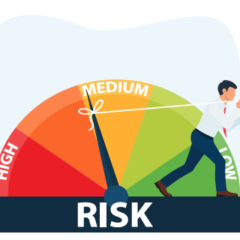Published on
Obesity and Heart Health
Weighing the Facts
In this edition of Patient Pulse, we’re pleased to welcome Kenya Palmer Emrich, FNP for a discussion on obesity and heart health. Kenya is a board-certified family nurse practitioner with over eight years of experience in medical weight management. Prior to nursing, she worked as a personal trainer and university strength coach. She is currently a Nursing Instructor at the MGH Institute of Health Professions.
In this webinar, Kenya addresses:
- What obesity is from a medical perspective
- Obesity’s role in heart disease
- How to decrease cardiovascular risk with weight loss
- What “meaningful” weight loss looks like
- Tools for weight loss
Key takeaways:
- Obesity is a chronic disease that is caused by many factors and negatively impacts heart health in various ways
- Weight loss of 5-10% will help improve your health and decrease your risk of a cardiovascular event like a heart attack, stroke, or blood clot
- Find a lifestyle that’s sustainable for you
- Medications and surgery can be good options if weight loss has been a struggle
Full Video Transcript
I’m excited to be here, and it’s an honor to work with the North American Thrombosis Forum, and a joy to bring you this very brief discussion on obesity and heart health and weigh some of the facts. This is a big conversation that we could have that would take much longer than 10 minutes, but I’m going to try and do it some justice.
So, I’m going to briefly define obesity and discuss it as a state of energy and balance with several contributing factors. I will talk a bit about how obesity and fat cells contribute to cardiovascular disease and how weight loss can decrease your risk for repeat cardiovascular events. I want to make sure I help you understand what meaningful weight loss is in this setting and how to achieve it. And hopefully, you’ll leave with a few facts and an action plan to take home. All right, so tall order of business there.
What is obesity? Obesity is not simply excess weight, but an excess body fat that negatively impacts your health. It is a chronic, often relapsing disease that we define based on body mass index (BMI, which is a ratio of weight in kilograms to height in meters squared. And I know there’s a lot of controversy around BMI at this point, but it’s still what we use clinically to make the diagnosis. So, someone is diagnosed with obesity when their BMI is greater than or equal to 30 kg/m2.
Obesity is a multifactorial disease that occurs because of various internal factors like hormones and genetics, as well as external factors like food shortages and environmental stressors. And all of these factors—and many more—contribute to obesity. You can see how complex this disease is.
I did provide you with a copy of this 2015 infographic prepared by the Obesity Society, and you can see here some of the potential contributing factors to the development of obesity and how they group them into two different categories. There’s a lot of different things going on here. So, thinking about obesity simply as just excess weight and something that’s just related to diet and exercise alone isn’t exactly the right way to do it, okay? There’s a lot going on here. And like any disease state, obesity occurs when there’s a loss of balance.
We often say that energy intake or storage exceeds energy expenditure or usage – and when I say energy, what I’m really talking about here is calories. That’s often what we really are talking about. So, our intake is our diet of fats, proteins, and carbohydrates. Our environment, which is sometimes referred to as obesogenic, meaning it promotes obesity, can contribute to increased intake, like living in an area that has more fast-food restaurants or having larger plates which increase our serving sizes. Alterations in gut hormone levels like ghrelin, which is a hunger hormone, can increase your intake and promote fat storage.
But when we talk about energy expenditure or caloric expenditure, when that increases—so expenditure increases or there’s a shift in the balance in that direction—that’s when you start to see weight maintenance occur or weight loss occur. And our bodies use some of our energy when we eat. Digestion, absorption, and breakdown of nutrients from our diet has an energy cost. So that helps kind of shift in that direction. We burn calories during physical activity and potentially make a type of brown fat that improves our metabolism. And then we have regular exercise, and hopefully we’re participating in regular exercise. That helps us burn calories during the exercise activity, but also strength training helps to maintain our muscle mass, and then that increases the amount of energy expenditure even at rest. So, our resting metabolic rate goes up.
So again, although we’ve historically thought of obesity as a cosmetic issue and just dealing with diet and just exercise alone, it’s a misconception to just think of it that way, and we really have to think about it as a more complex multifactorial disease. But it doesn’t take away the fact that trying to create this balance, in diet and exercise, is beneficial.
It’s important for me to help you understand how obesity leads to cardiovascular disease and the cardiovascular events that either you or some of your loved ones may have experienced. The fact is that it’s not a direct relationship. So, obesity and cardiovascular events aren’t necessarily a one-to-one. Not everyone that carries more weight will always develop cardiovascular health concerns. But for those that do, it is likely because obesity is an inflammatory disease. The excess fat cells produce and release various hormones that lead to blood clots, increased blood pressure, increased circulating fats, and insulin resistance. And these changes result in thrombotic events, high blood pressure, high cholesterol, diabetes, and heart disease. For those of you who have personally or know loved ones that have had strokes, big or small, pulmonary embolism, and heart attacks—just to name a few—it’s true that their excess weight of obesity contributed to their condition.
Excess weight, especially in the abdominal region, weighs heavy on the heart, so it puts a little bit more stress and pressure on the heart. And with that, including the need for the heart to work a little bit harder to efficiently supply blood to the bigger body, those two things in combination with disease state, such as hypertension, they compound on top of each other and eventually lead to diseases like heart failure. So, this is how we can end up with cardiovascular events and cardiovascular disease when we carry more weight or have a medical diagnosis like obesity.
So will weight loss help? A 5-10% weight loss is meaningful. There is hope. You can decrease your risk and potentially prevent another cardiovascular event by losing some weight. But when you’re thinking about weight loss, I don’t want you to think about the number on the scale as much as the percentage of weight loss. So, you can find yourself, or I would like you to find yourself making some specific, measurable, attainable, realistic, time-bound changes or SMART goals and set your SMART goal to 5-10% weight loss. Although this doesn’t seem like much—it’s not those Biggest Loser numbers that we’ve typically seen—it is clinically meaningful because we know that from the research 5-10% weight loss decreases blood pressure, your total cholesterol, and triglycerides. It increases the good fats, and it decreases your glucose, all of which will help prevent future cardiovascular events.
In addition, think about where the weight loss occurs. Although we can’t spot reduce—which we all wish we could, right, just get rid of that belly we have—it’s important that you think about weight loss as a complete system. That abdominal fat and your waist circumference and your waist-to-hip ratio are really important. We know that the weight that we carry in our abdomen or the visceral fat is detrimental to our cardiovascular health, more so when compared to BMI. So waist circumference becomes a little bit more important. So, trying to achieve a waist circumference of 35 inches if you’re female sex or 40 inches if male sex, that helps lower your risk of future events. So, 5-10% weight loss and trying to get the waist circumference down is very beneficial to your overall heart health.
How do we get the weight off? You want to find a sustainable heart-healthy diet. Basically, you want a diet that, at the end of the day, facilitates weight loss and is sustainable. It should be heart healthy, create fullness so you’re not kind of overeating and snacking throughout the day, it should provide you with some energy so that you can get through the stress of the day but also so that you can do a little bit of exercise. And it should definitely be one that you enjoy. You should also move a little bit every day and starting with 10 minutes is great, but we want you to work up to about 30 minutes or maybe even a little bit more. More is better, but it should be a movement pattern or exercise routine that is safe, can be done in a safe environment, it’s safe for your body, and it’s fun. And there is a lot of research that supports cardiovascular exercise because of how it improves the efficiency of your heart.
So, how do you keep it off? That’s a big question for a lot of people. You adhere to your plan. Consistency is key. Everyone can choose a different diet and a movement pattern or exercise routine, but at the end of the day, adherence is what makes the difference. We know from the research that adherence is the most important contributing factor to initial and sustained weight loss, not the specific diet or the exercise plan. For everyone it’s not always that easy and I know that, and I’ve seen that, and I understand that, so what do you do if you’re having a hard time losing weight or maintaining your weight loss?
First, don’t get discouraged. It’s a great opportunity for you to reach out to your healthcare providers and have an open discussion about medications, which can be very helpful. Medications have been around since the 1950s, but only recently has there been an increase in the number of options. There’s a lot of medications that we use for weight loss that also help lower your blood sugars, so they also help with diabetes. There’s some that will also help with nighttime eating and snacking and things like that. So, take the opportunity to talk to your healthcare team about medications and the different options that are out there that are right for you. It’s a conversation worth having.
And if you’ve tried diet and you’ve tried exercise and medications and you’re still struggling to maintain significant weight loss, surgery is also an option and I’ve seen firsthand how great the weight loss can be and how significant the positive impact is on cardiovascular health, but also some of the other risk factors like cholesterol and hypertension and diabetes. It’s a viable option and also another great discussion to have. But I do want to make sure that you understand that even if you consider medications and/or surgery, the most important thing for you to remember is that these are just tools, and sustainability and adherence to your diet and exercise routine are also still very, very important.
So what are your key points to take home? Obesity is a chronic, multifactorial disease that negatively impacts heart health in various ways. Weight loss of 5-10% will help improve your health and decrease your risk of another cardiovascular event. Decreasing your waist circumference towards a healthy range is more effective at decreasing your risk factors than just BMI or weight loss alone. And finding a lifestyle that is sustainable is key. And then finally, if you find that you aren’t making the progress you desire, consider talking to your healthcare team about medications and surgery as these are good options if weight loss has been a struggle for you.



